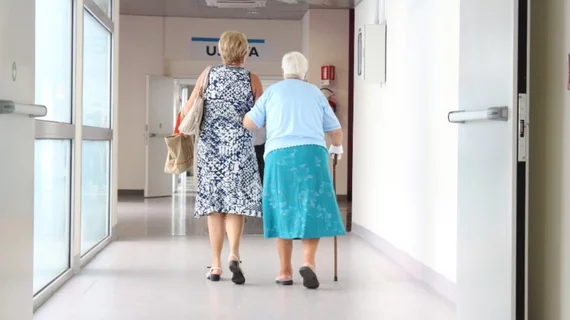Left ventricular assist devices (LVADs) lead to strong outcomes among patients over the age of 75, according to new data published in the Journal of the American College of Cardiology.
“Continued advancements in bioengineering, perioperative care, and pharmacotherapy have been associated with improved clinical outcomes in patients with LVADs; however, national data on contemporary outcomes including quality of life and survival with newer-generation durable LVADs are scarce, particularly in older patients,” wrote lead author Dominic Emerson, MD, a transplant surgeon at the Smidt Heart Institute at Cedars-Sinai Medical Center in Los Angeles, and colleagues.
Emerson et al. evaluated data from more than 24,000 adult heart failure (HF) patients with a median age of 57 years old. While 78% of patients were men, 66% were white. All patients received a durable primary continuous flow LVAD from Jan. 1, 2010, to March 1, 2020. The cohort included 17,000 patients under the age of 65, more than 6,000 patients ages 65 to 75 and more than 1,000 patients over the age of 75.
Overall, mortality rates were 34% for patients under the age of 65, 55% for patients ages 65 to 75 and 66% for patients over the age of 75. Such complications as stroke, device malfunction/thrombosis and rehospitalization actually became less likely as patients got older. Also, patient quality of life showed considerable improvements for all age groups.
“This analysis of a comprehensive, nationally audited clinical registry shows substantial improvement in quality-of-life and functional outcomes after LVAD implantation for most, including elderly patients aged >75 years, and provides new evidence that elderly patients experience significantly lower rates of major late complications including stroke, device malfunction or pump thrombosis, infection, and rehospitalization after receiving durable LVADs compared with younger patients in contemporary practice,” Emerson and colleagues wrote.
The researchers did note that, despite advancements in technology and consistently improving outcomes, the proportion of elderly patients receiving a LVAD has “remained very small and relatively unchanged”
“This suggests that among elderly patients, who are most affected by advanced heart failure and have the least access to transplantation, durable LVAD therapy may be underutilized,” they wrote.
The full analysis is available here.

